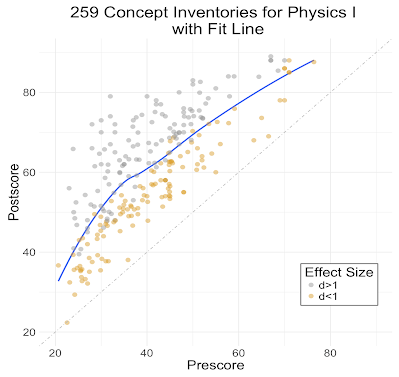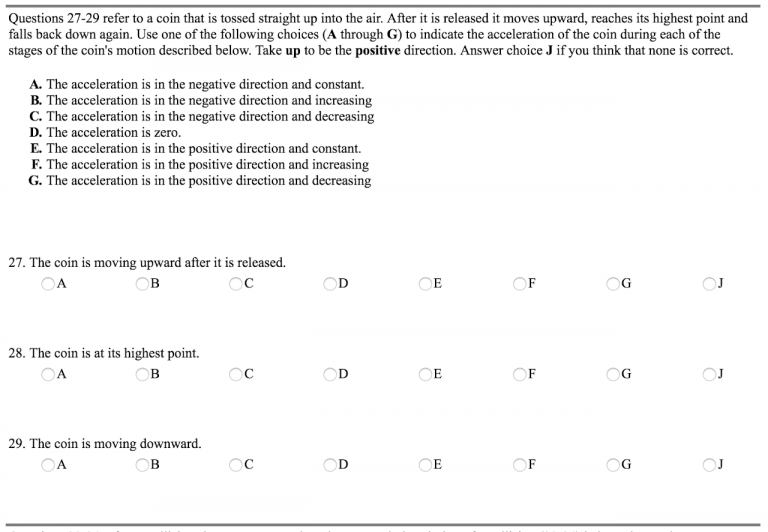Force and Motion Concept Evaluation (FMCE)
Purpose
The FMCE assesses students understanding of basic concepts in Newtonian physics.
Population
The FMCE is commonly administered in introductory college mechanics courses (algebra-based and calculus-based) and high school physics courses.
Typical Performance
In our models, we have found that the FCI and the FMCE have very similar scores. The plot below contains pretest and posttest scores on the FCI and FMCE from 259 introductory physics courses that are either reported in the literature or collected with LASSO. The average effect size (Cohen’s d) is approximately 1.

Validity
Thornton and Sokoloff published the FMCE in 1998.
Thornton, R. K., & Sokoloff, D. R. (1998). Assessing student learning of Newton’s laws: The force and motion conceptual evaluation and the evaluation of active learning laboratory and lecture curricula. american Journal of Physics, 66(4), 338-352.
Thornton, R., Kuhl, D., Cummings, K., & Marx, J. (2009). Comparing the force and motion conceptual evaluation and the force concept inventory. Physical Review Special Topics – Physics Education Research, 5(1), 1–8. https://doi.org/10.1103/PhysRevSTPER.5.010105
Research
The research conducted with the FMCE is extensive. We recommend reviewing the citations listed below to find articles of interest.
Ramlo, S. (2008). Validity and reliability of the force and motion conceptual evaluation. American Journal of Physics, 76(9), 882-886.
Wells, J., Henderson, R., Traxler, A., Miller, P., & Stewart, J. (2020). Exploring the structure of misconceptions in the Force and Motion Conceptual Evaluation with modified module analysis. Physical Review Physics Education Research, 16(1), 010121.
Smith, T. I., & Wittmann, M. C. (2008). Applying a resources framework to analysis of the Force and Motion Conceptual Evaluation. Physical Review Special Topics—Physics Education Research, 4(2), 020101.
Smith, T. I., Wittmann, M. C., & Carter, T. (2014). Applying model analysis to a resource-based analysis of the Force and Motion Conceptual Evaluation. Physical Review Special Topics-Physics Education Research, 10(2), 020102.
Example LASSO Report
Please follow this link to our example report for concept inventories.
Similar Instruments
More Information
For more information, please visit the Physport webpage on the FMCE.

